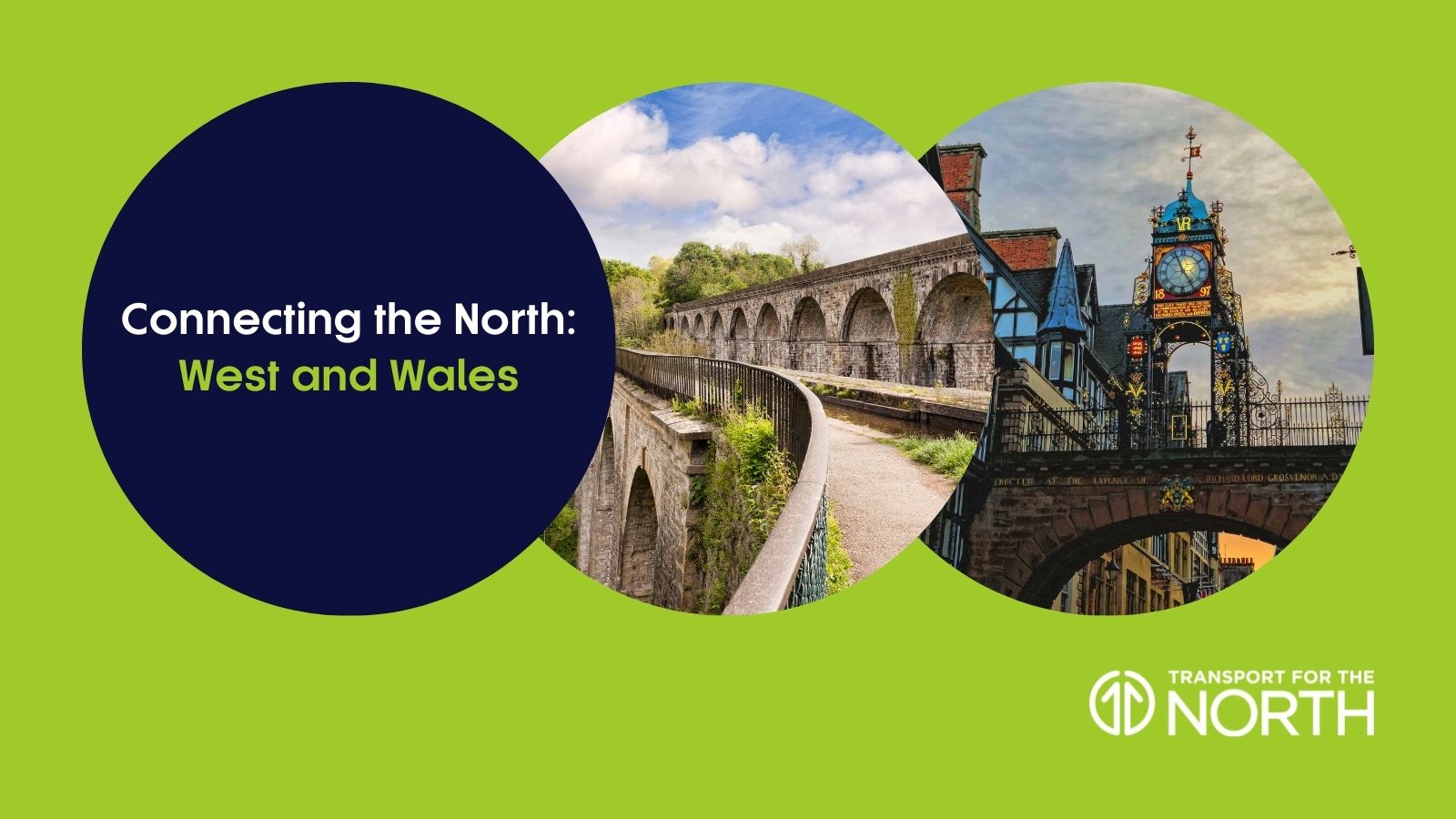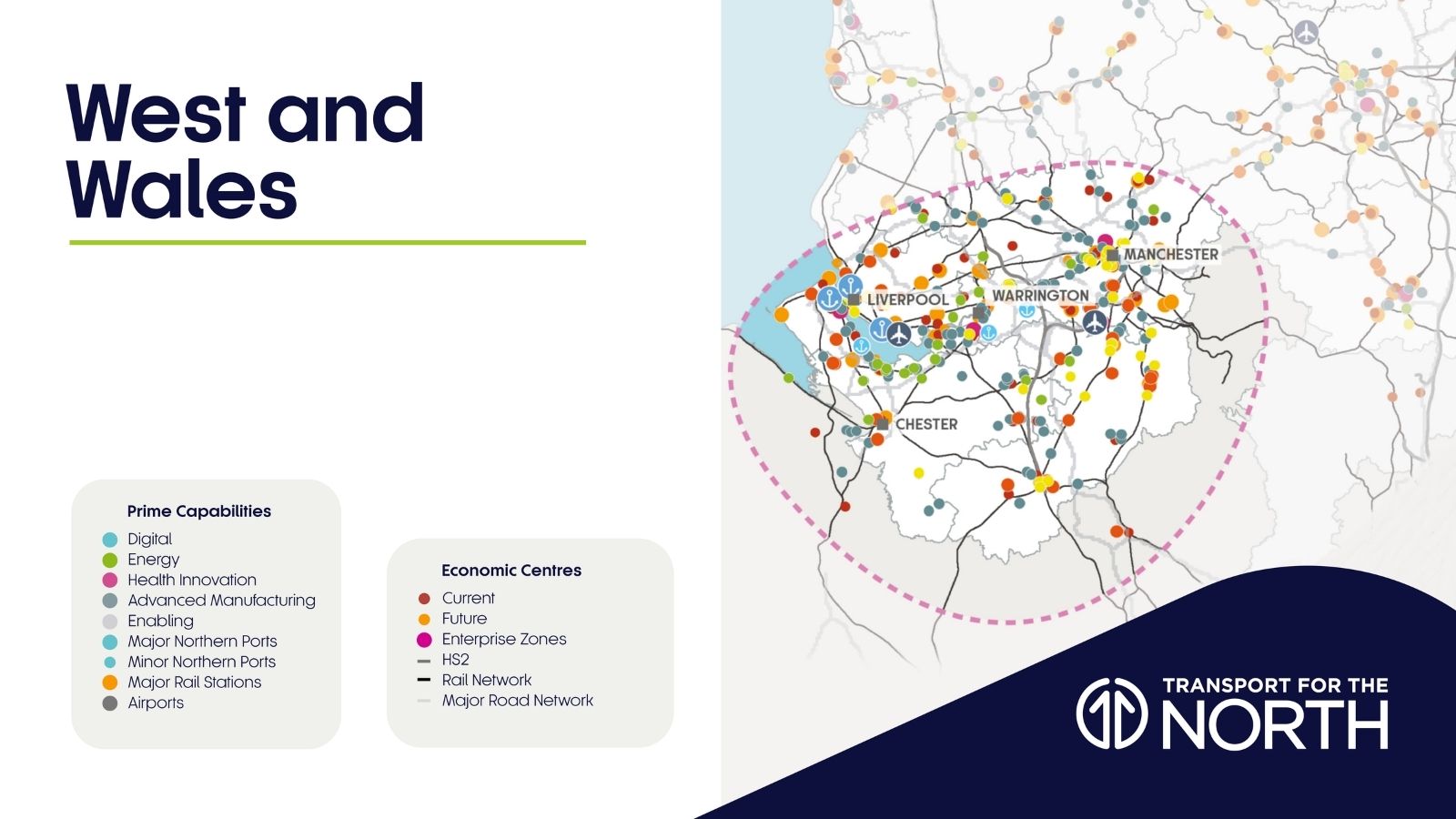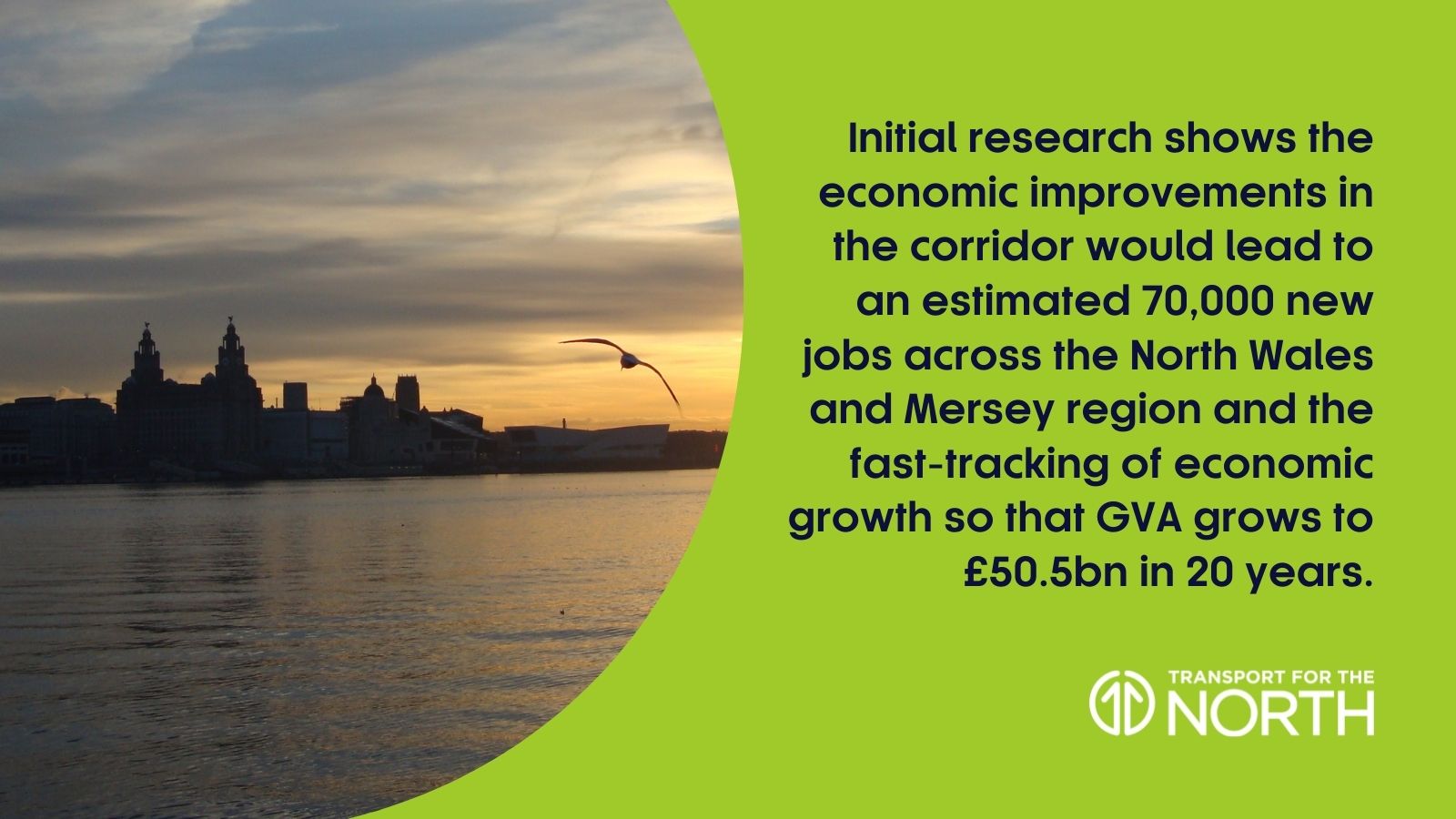At Transport for the North our aim is to make transport easier, faster and more accessible for all – which is why we’re focussed on improving connections across seven key regions – including the West and Wales.
Securing investment for better transport networks between specific towns and cities in the West and Wales will encourage significant economic growth in this Corridor and the surrounding areas.
A more sophisticated transport system will allow both businesses and individuals alike to be able to travel more easily and efficiently.
In our ‘Connecting the North’ series, we will look in detail at each of these Strategic Development Corridors to understand the progress that has already been made, and the future opportunities they will provide for improved connectivity.

North Wales Councils have identified poor transport infrastructure as a ‘barrier to economic growth’, with inefficient lines and slow, outdated trains making travel difficult.
Faster, more frequent services to destinations linked to employment zones, in addition to the electrification of lines, aims to make the ‘network more competitive with the private car and capable of assisting economic growth in the region’.
The focus for connecting the West of England to Wales is on looking at how to effectively improve and modernise road and rail travel between these areas, whilst also considering waterborne options.
The West and Wales corridor links some of the North’s largest cities, including business and economic hubs; Liverpool and Manchester, and would also include improvements in connectivity between the Midlands and North Wales.
This is crucial in enabling greater economic growth, both generally in terms of more visitors to the area, but also for boosting projects at Manchester Airport and Cheshire Science Corridor Enterprise Zones.

In the Mersey and North Wales cross-border region, a campaign for investment in transport infrastructure has been formed with the goal of boosting the economy. Growth Track 360 aims to produce the benefits including:
The projected economic growth for the areas within the corridor is significant. With this economic growth – the necessity for efficient, reliable transport will be greater than ever.

By working with partners in Cheshire, Flintshire and the Mersey Dee area, Wrexham Council has positioned economic growth, carbon projects and improvements to rail infrastructure at the top of the agenda, with the aim being to boost connectivity across borders.
Deputy Leader of the Independent Group on Wrexham Council, Councillor David A Bithell, gave TfN an insight into how ‘Growth Track 360’ will benefit North Wales, and outlined some of the rail infrastructure improvements which have taken place to date.
“So far the part-redoubling of the £44 million railway line from Chester to Wrexham has been completed,” he said.
“This improvement itself allows for more reliable services for passengers and faster recovery in the case of incidents on the line.
“We are also committed to supporting the North Wales metro project and the new planned station at Deeside – both of which will help not only connectivity, but economic growth in the region.”

Councillor Louise Gittins, Leader of Cheshire West and Chester Council and Transport for the North’s Vice-Chair, said initial research shows the economic improvements in the corridor would lead to an estimated 70,000 new jobs across the North Wales and Mersey region and the fast-tracking of economic growth so that GVA (the value of goods and services produced each year in the region) grows to £50.5bn in 20 years.
She added: “Growth Track 360’s campaign to electrify the North Wales Coast railway line from Holyhead to Chester in 2016/2017 secured improved rail services from North Wales to Manchester, Liverpool and Cardiff via the Welsh Government’s Wales and Borderlands Franchise.
“We also have commitments from the UK Government for investment in the North Wales Coast Line and Chester Station to enable more frequent services from North Wales to pass through to other locations.”
One of the key goals of this project is to not only create better, more reliable networks between the West and Wales, but also to focus on preserving the surrounding natural environment which is equally key to both the residents and economy.